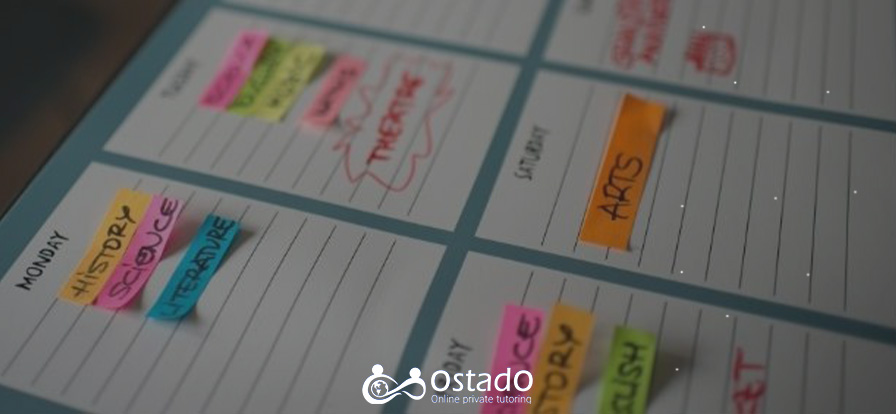Students typically do eight to ten GCSEs to have broader choices, and they need excellent grades to meet the entry requirements of top universities. The volume of information they have to study and revise for the GCSE exams is, without a doubt, prodigious, and only through planning is it possible to stay on top of the revision process and revise all the subjects. You can download your free revision timetable templates here to devise a revision plan and learn how to create your own plan.
The Components of a Revision Timetable
Before creating your timetable, list all topics under each GCSE subject that must be covered in your GCSE revision timetable so that they don’t slip your mind.
- Comprehensive and balanced: The revision timetable should cover all GCSE subjects, but you should also allocate more time to the challenging subjects. By balanced, we mean that you invest enough time in each GCSE subject based on its complexity.
- Personalised: Depending on whether you’re a morning person or a night owl, study the complicated subjects when your brain is at its best. Additionally, you should focus more on the subjects you want to pursue in further education.
- Prioritised: The revision plan must be designed according to the exam schedule. Prioritise the subjects based on their exam timetable.
- Clear targets: Decide what you want to achieve and write it down. These targets give you the coordinates of your revision timetable. You should set short-term targets and long-term goals.
- Detailed: The timetable must indicate when you want to study what and for how long. Indicate the chapters and pages that must be covered at a specific time. Your tiny study blocks will ultimately realise your GCSE goals.
- Realistic: Consider your resources (e.g., time, revision materials, and access to a quiet place, among other things). Don’t be idealistic, but do try to push your limits.
- Enough breaks: You won’t learn much with a worn-out mind. When you feel tired, give yourself a break and do something to cheer yourself up. You can follow the 50/10 rule or the Pomodoro technique to balance study blocks and breaks.
- Flexibility: No matter how good a planner you are, things get in the way. Allow some time in your timetable for unexpected incidents. A crammed revision plan will beat you as soon as something goes against your plans. Feel free to modify your timetable to eliminate any inconveniences. Remember, the revision timetable shouldn’t distort your personal life.
Note:
Every once in a while, check your progress. What percentage of the GCSE topics have you covered? Are you struggling with the pace, or is it running smoothly? Have you gained the skills and knowledge to take the GCSE exams?
Past papers are great tools for assessing yourself and identifying knowledge gaps.
How to Create a Printable GCSE Revision Timetable
You can create a hand-written timetable on a piece of paper. But there are going to be lots of corrections and changes, so we suggest you create using your computer. You can make unlimited changes, use it infinitely, and easily share it with others when it’s on your computer. Plus, it will be neater.
You can create your revision planner template using Microsoft Excel or Google Sheets.
I suggest using the first column to indicate the time and the following columns for activities and details. This way, you can add as many rows as you want to the timetable without making it look wide and weird.

You can also create a weekly revision timetable template. The first column shows the time, and the following columns show the days of the week.
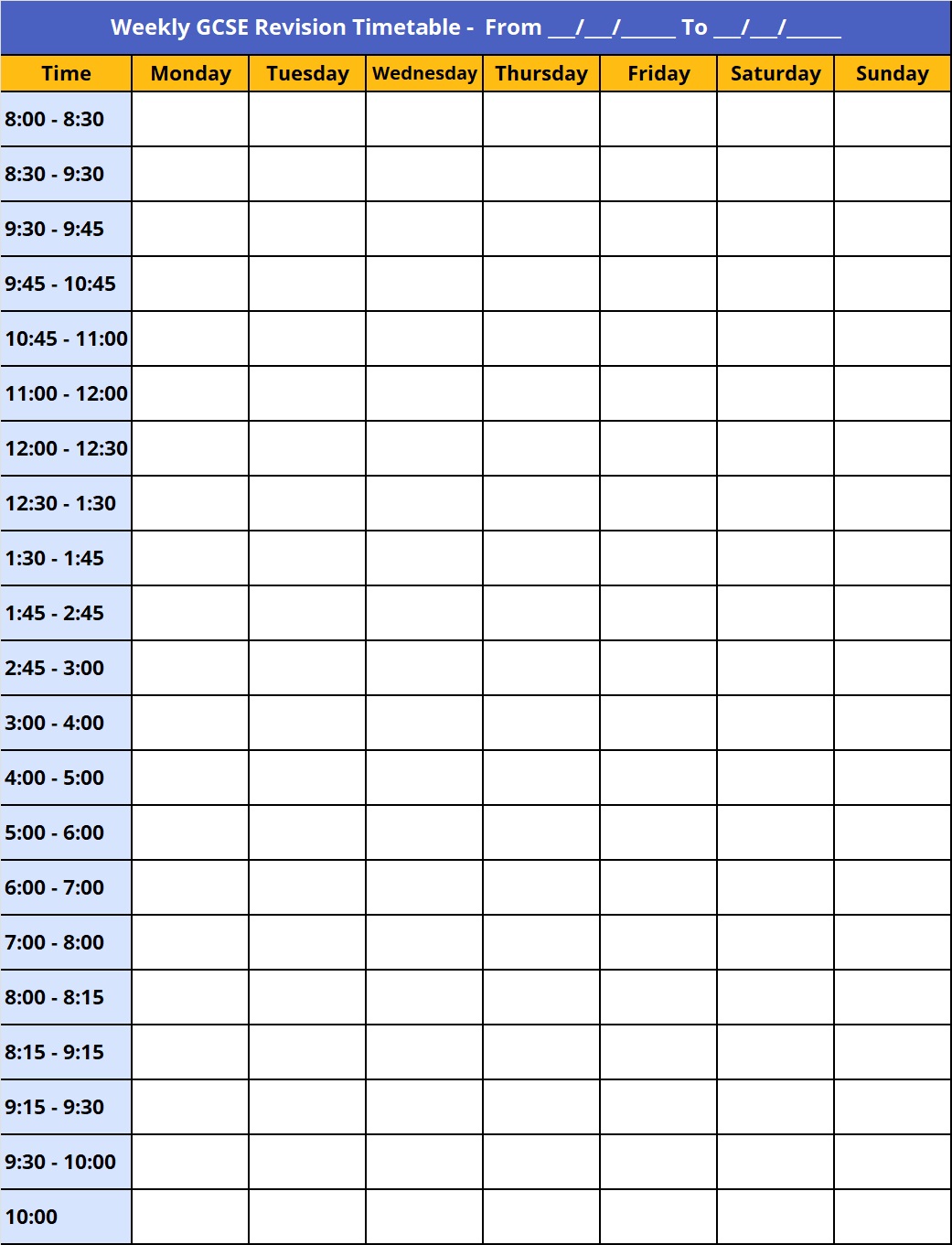
You can monitor your progress using the following weekly GCSE progress check.
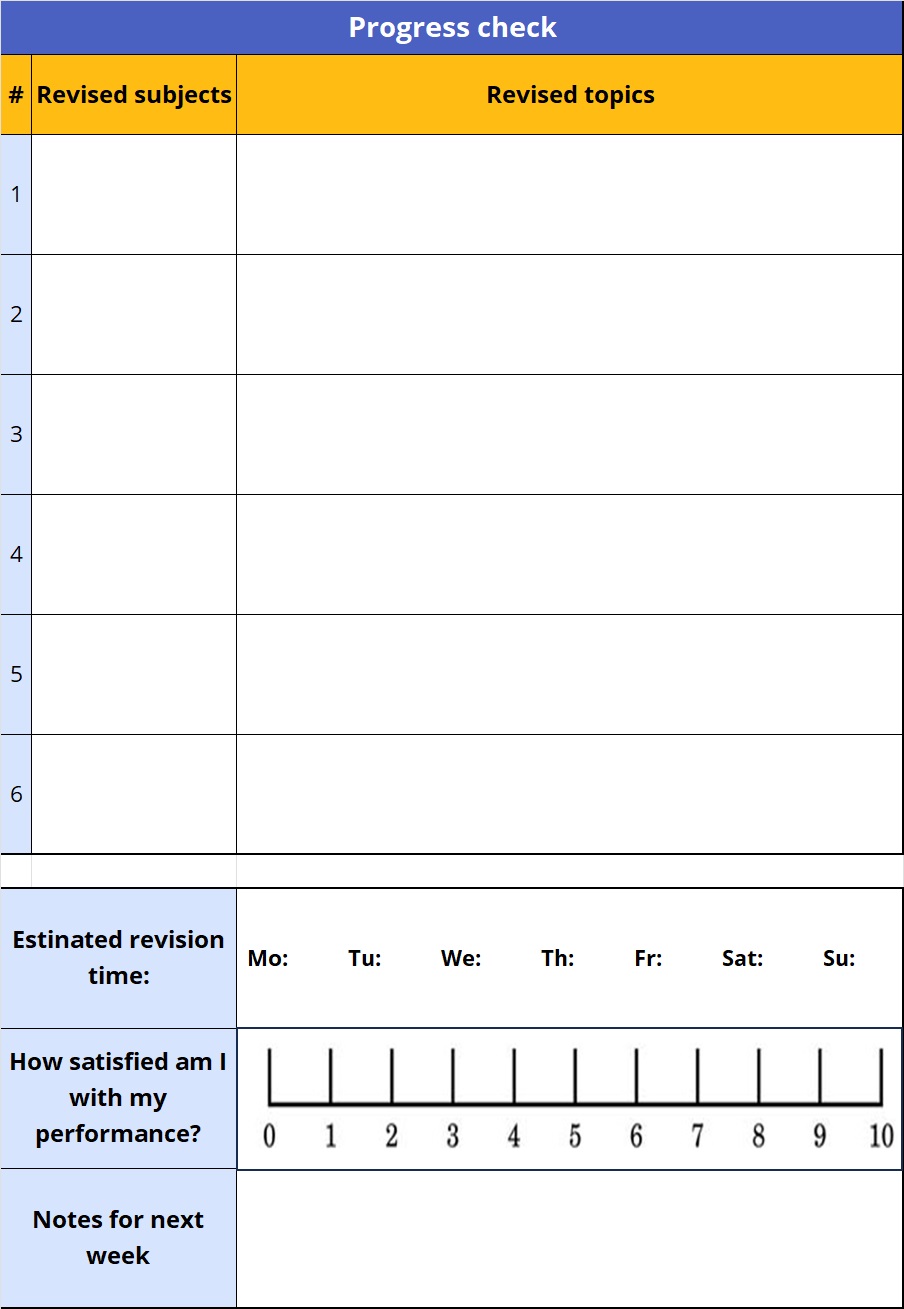
Pomodoro-based Revision Timetable
Basically, the Pomodoro technique is a practical way of getting things done. Based on this technique, you should revise a subject for 25 minutes, focusing on the time. Then, you should take a five-minute break. You should repeat this cycle 4 times (2 hours), and then you can take a relatively longer break, say 30 to 40 minutes.
The GCSE revision timetable below is designed based on the Pomodoro technique. If you’re the type of person who can’t concentrate on one thing for long, this timetable template can help you survive GCSE revision.
If you’re looking for a checklist of GCSE subjects and topics to revise, this picture will help you design a comprehensive revision schedule.
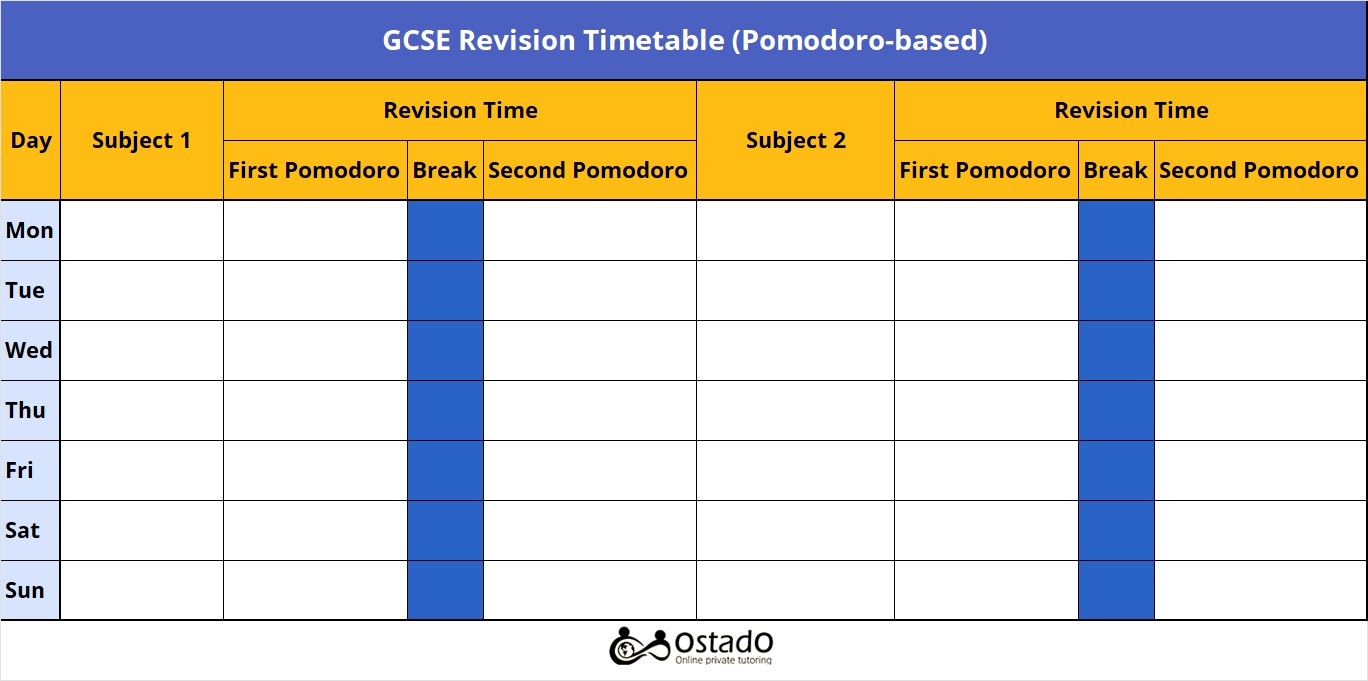
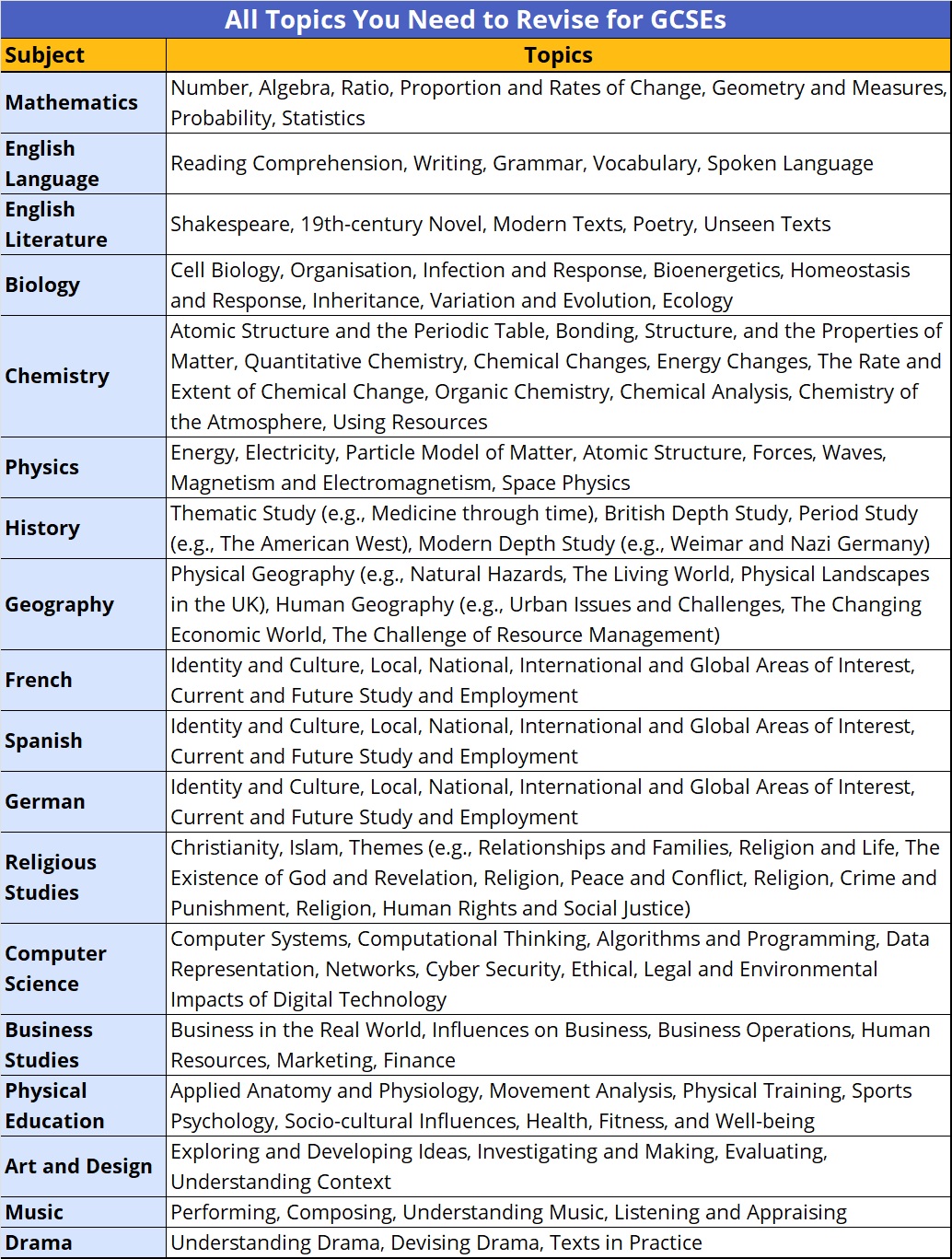
Free Revision Timetable Templates + Download
Click to access the GCSE revision timetable template Excel . You can make a copy and personalise the timetable (e.g., add/remove rows, change the time, etc.). The current size is printable on A4. We have also created a sheet of all GCSE subjects and topics and samples of daily and weekly timetables.
You can also download them separately below:
- All GCSE subjects and topics PDF
- Daily GCSE revision timetable template
- Weekly GCSE revision timetable with template
- Pomodoro-based revision timetable template
- GCSE weekly progress check template
These templates are beneficial for students who prefer prospective revision. Some students prefer retrospective revision. Click on The Retrospective Revision Timetable to learn more.
Maximise Your Revision Plan Productivity
Devising a revision plan for the GCSE exams is complicated and time-consuming. You should be familiar with different aspects of the GCSEs and consider several factors in prioritising one over another. What’s worse is that it may not even work out in the end, especially if you’re close to exam season. At this point, the viable solution is getting help from a teacher or a tutor.
Ostado‘s GCSE tutors have extensive knowledge regarding the GCSEs, and they can help you create a new and personalised timetable or refine your current one to get the best GCSE results.
Also read: How To Get Good Grades in GCSE
Top Tips for Creating Revision Timetables
- You can plan what to study in the revision sessions the night before or schedule a whole week in advance if you are not expecting anything to disrupt your plan.
- It’s better to focus on one subject at a time. For instance, don’t suddenly switch to physics when revising GCSE maths unless you want to check something quickly.
- Use colour coding in your revision timetable. For instance, you can use coloured pens to indicate whether a subject or topic is challenging and needs further revision. You can use red for hard topics, and as you practise and learn them thoroughly, you can use green or blue.
- Track your progress to understand where you are in the revision plan and whether you need to change your pace.
FAQs - GCSE Revision Timetable Template Printable
- How many hours a day should you revise for GCSE?If you start early enough, you don't have to cram too much in one day. 3 to 4 hours on weekdays and 5 to 6 on weekends and holidays will do.
- Is 4 months enough for GCSE revision?4 Months can be enough if there are no interruptions in your revision plan. But to be on the safe side, I'd say you start 6 months before the first exam.
- What is the 2 3 5 7 rule?It's a revision technique based on spaced repetition and active recall. Click on "Spaced repetition and the 2357 method" to learn more.
- How much time to spend in each revision session?Normally, you can keep revising until your brain signals it needs a break. But you can revise for 60 minutes and take a 15-minute break. If you cannot concentrate on a topic for long, you can also use the Pomodoro technique.

